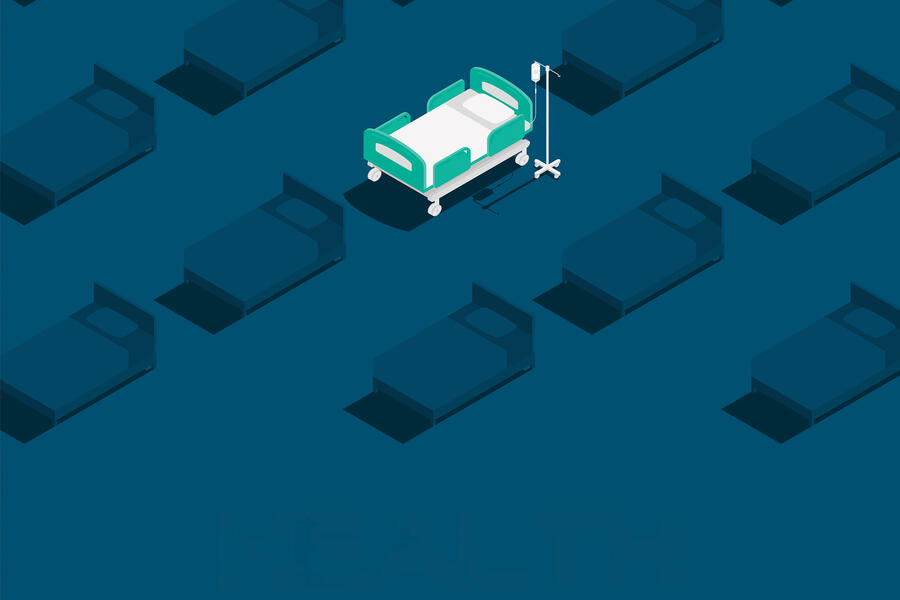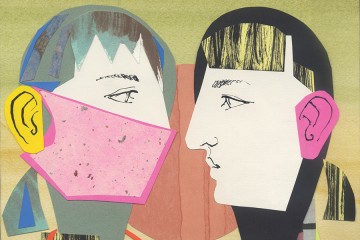Bob likes to watch cartoons. Ken finds joy in R&B music. And Carol feels cozy with her blankets pulled up to her ears. These small, personal details about patients' lives may not seem revolutionary, but they're at the crux of a new AI-based program enabling doctors and nurses at Johns Hopkins Hospital to deliver better, more empathetic care while staving off stress and burnout among health care providers.
The program, This Is My Story (TIMS), grew out of Elizabeth Tracey seeing signs of distress during the COVID-19 pandemic among physicians, patients, and families in the medical intensive care unit. There, patients were often intubated and unable to speak. A chaplain for special ministries at Johns Hopkins Hospital, Tracey asked her friend Brian Garibaldi, a pulmonologist and former director of the biocontainment unit, how he was coping. "He was so patently distressed. He said, 'Oh, Elizabeth, it's terrible,'" she recalls. When patients died, he often knew nothing about them besides their medications and ventilator settings.
Garibaldi's experience matched what Tracey observed and what a meta-analysis from the University of Pennsylvania of 400-plus studies suggests: Meaningful connections matter in health care, and empathy plays a key role. When doctors develop an authentic relationship with a patient, that person feels seen, heard, and valued. But empathy doesn't only boost patient satisfaction—it also improves clinical outcomes and combats burnout among health care providers, the study finds.
Currently, burnout affects as many as 45% of physicians and 65% of nurses in the U.S., according to the American Medical Association, with symptoms ranging from emotional exhaustion to a sense of going through the motions and feeling detached. Burnout rates reached record highs during the pandemic. They've since decreased but remain a national concern.
After talking to Garibaldi (now at Northwestern University), a light bulb went off in Tracey's head. Tapping her other set of skills as a journalist who creates radio spots as director of the Johns Hopkins Health Newsfeed, she conceived of a plan to record audio clips of patients or their loved ones answering four simple questions: How do you want to be addressed? What brings you joy? What does the medical team need to know about you to care for you best? What brings you peace? The audio files could then be uploaded to patients' electronic health records (EHRs), where providers could listen to the clips—and glean personal details about patients in their own words or those of a loved one.
Now, five years after starting TIMS, Tracey has gathered more than 1,000 patient stories and published five journal articles evaluating the program's methodology and outcomes. Her hunch was right: Care teams reported enhanced empathy and communication with patients, and most patients considered it a positive experience. With support from Johns Hopkins Health System, she commissioned developers to create a TIMS app, now in beta version, that lets nurses and other care-team members conduct patient interviews themselves.
But a roadblock remained: To scale TIMS, Tracey needed to streamline the editing and uploading process. She wondered whether AI could help—and found a willing partner in Bikram Bains, a biomedical engineering major at Johns Hopkins who had contacted her about volunteering. Bains recruited two classmates, Edgar Robitaille and Sampath Rapuri, who are double majoring in BME and computer science. All three plan to attend medical school.
Now seniors, "the boys," as Tracey calls them, are leveraging AI to scale TIMS throughout Johns Hopkins Hospital, having spent two years building the algorithm. Their AI-based solution runs each TIMS recording through a proprietary and HIPAA-compliant large language model that splices the audio into different segments, Robitaille says. "It only outputs the segments it deems important for the care team," removing background noise and filler words like "uh" and "um," he adds.
Already installed on nurses' phones in critical care units, with broader use to come, and accessible through patients' EHRs, TIMS is making a difference. Miriam Quinlan, a neurologist and second-year fellow on the neurosciences critical care unit, listens to TIMS files with her team before they examine patients. "In the NCCU, our patients are often limited in the ways they can communicate," Quinlan says. "TIMS provides the care team with context and background on patients, [while] giving [us] perspective on what is important to them ... [and] facilitating a humanistic approach to caring for patients."
Tracey says she saw such an approach spawned by a TIMS recording for end-of-life care, where a loved one describes their partner, a former patient and organ donor, as "the ultimate provider." The entire medical care team listened to his TIMS file, and as they wheeled him to the OR to donate his organs, his physician remarked, "'All the way to the end, he provided not just for his family but for all kinds of other people,'" Tracey recollects. Examples like this, she says, demonstrate "how AI can emphasize and preserve humanity, rather than [replace] or eliminate it."
Posted in Health, Science+Technology
Tagged engineering, artificial intelligence











